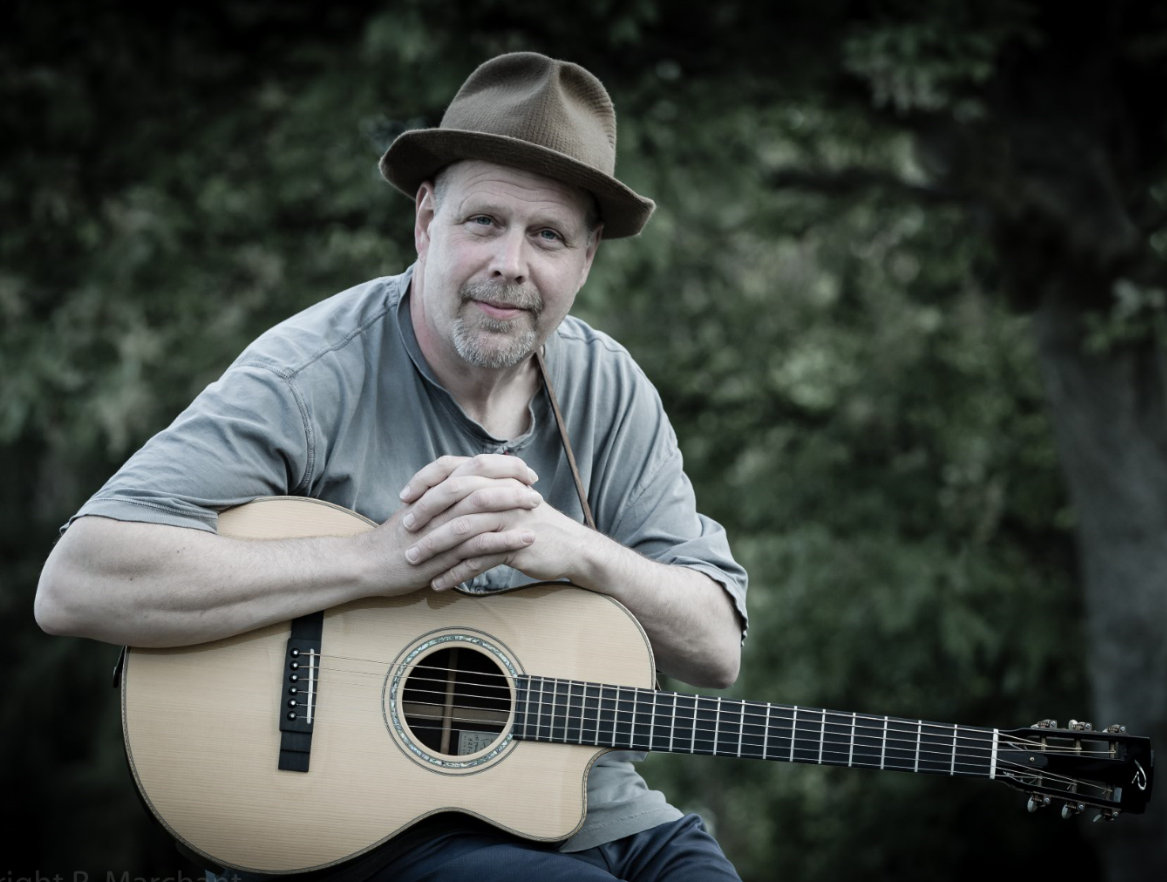Workshop - Pork Belly Futures
This workshop was published in the Fall 2016 issue of the Fingerstyle Guitar Journal. To receive fingerstyle guitar interviews, workshops, reviews, and more automatically each quarter subscribe to the Fingerstyle Guitar Journal
I’ve been playing Pork Belly Futures for a long time. I wrote it back in 1988 while coming home in a snowstorm from a gig in Green Bay, WI. The announcer on the radio show took a break to give the news and the pork belly futures report. I was new to the Midwest and had never heard of such a thing. Whatever it was, I thought it probably wasn’t good news for the pig. I also thought the pork industry might like the idea of a theme song to go along with “the other white meat” slogan it had just introduced!
This tune is a challenge but a lot of fun to play. It’s a crowd pleaser and I still perform it on a regular basis. It also turned out to be a great platform to study inversions of Dom 7 chords and put them into action as well as a developing independent bass lines. Let’s look at the form of the tune and a good way to start learning it! I would suggest looking/ listening to the link. Get yourself familiar with the tune and try following along with the transcription while it is playing.
As an introduction to the tune, I use the turnaround from the 12 bar blues section. I consider it the hook and feel it really captures the feeling of the whole piece. The A section of the tune is 16 measures and I would consider it the main theme. Take a look at the endings. The first ending brings you back to the beginning to reiterate the theme again. The second ending leads you into to the 12 bar blues vamp, which I play two times through with different variations.
I would suggest practicing the main theme of the tune until it is fluent under your fingers. The next thing I would do is to identify and go over the turnarounds. This is (the intro) measures 1-4, 24-27, 36-39, 51-54, (the tag) 59-62, (the end) 63-66 It will become obvious that these four measure’s chord structures are identical. Play these turnarounds until they are fluent under your fingers.
My goal of using Dom 7 inversions in a clear concise way began in the vamp of the 12 bar blues on measure 15. This is sort of an introduction and I tried to emulate a pig squeal… that’s right, you read it here! Just trying to capture a picture in my mind to set the scene, I’ll call it a farm lick. You’ll notice that there’s an independent bass line going on throughout the twelve bars. I think it has a drunk professor Longhair Creole kind of feel to it. I was trying to incorporate as many inversions of an E7 chord as I could in a useful practical manner. In the first 12 bar blues vamp I use an E7/D so a doubled up 7 in the bass and treble notes. This is a cool inversion that I often use and it’s mirror image is ½ step up and one set of strings over, so an E7/G#. This inversion looks the same except that the third is doubled on the bass and treble notes. In the second pass through the 12 blues section (measure 28) I use a quick succession of three inversions, which overlap one another over one measure. Look at these changes carefully and slowly go through the changes until they flow. After the second run through the twelve bar blues section you DS to the third ending.
The third ending starts off with the final 12 bar blues vamp. This is really fun to play. I’m using a bar position on the 9th fret and utilizing the 9, & minor 3rd behind the chord, it sort of sounds like crying to me.
On the forth beat of measure 44 I lead into a broken third run like Fats Waller would use. Make sure you hold the dotted third beat on measure 46 for the full time. People over the years have asked me about that measure, and that’s the best way I can explain to approach it. Most people skip a beat!
Measure 55 is the last time through the theme of the tune. I look at measure 59-62 as a tag to set you up for the ending, these are the turnarounds.
This is really a tour de force of a piece. It might be something to keep in your repertoire. I hope you enjoy playing it.
